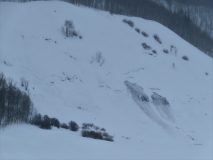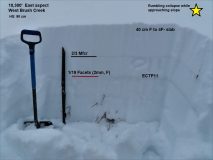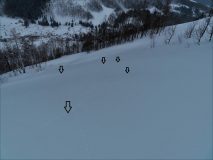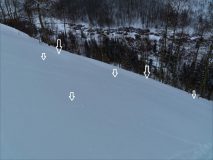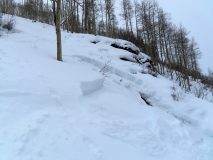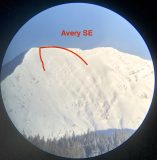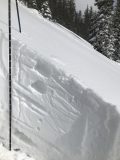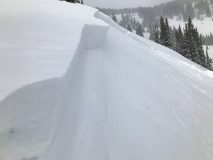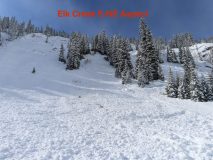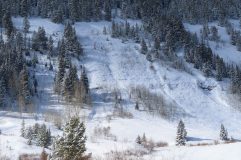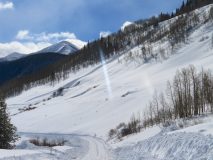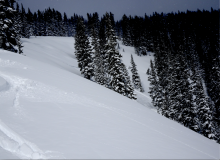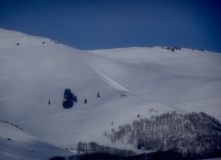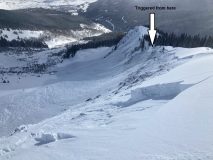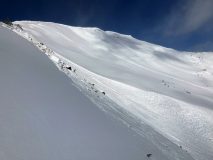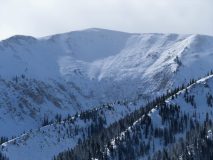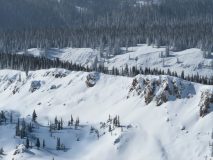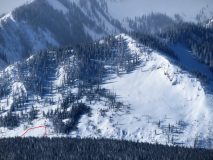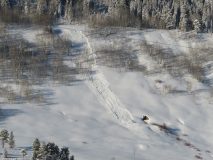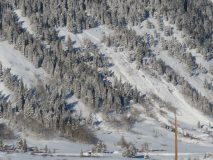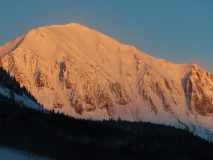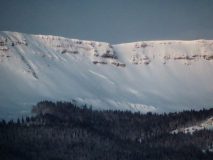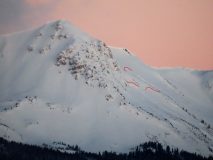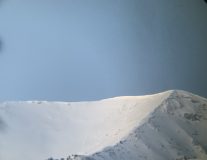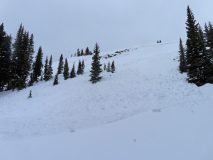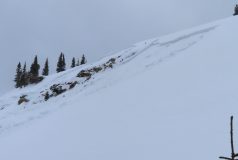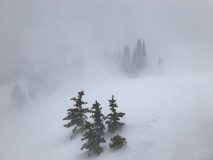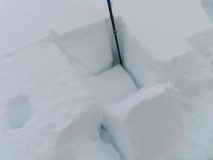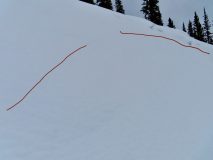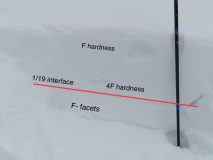Date of Observation: 02/05/2021
Name: Jared Berman and Zach Guy
Zone: Southeast Mountains
Location: Traveled up ridge on west side of West Brush Creek to Point 10,607. Descended East facing glades back down to West Brush Creek.
Aspect: East, South East
Elevation: 9500′-10600′
Avalanches: Ski triggered one small persistent avalanche remotely on a steep east facing terrain feature well below treeline at 9800′. See photo below. Light was very flat but we could see several natural D1.5 persistent slabs that likely ran during Wednesday night’s storm below treeline on east aspects.
Weather: Overcast skies with temperatures in the 20s and very light snowfall that increased throughout the day.
Snowpack: Widespread collapses and shooting cracks on east aspects and flat terrain. Snowpack is weak and shallow below treeline around Brush Creek. Snowpack averages 90cm at 10,000 ft in this zone. On east facing terrain, slabs are 40cm thick (F to 4F-) on top of well developed faceted fist hard grains down to the ground. An extended column test produced moderate results (ECTP11). Southeast terrain below treeline also contained a 40cm slab but it is interrupted by a 5cm meltfreeze crust (2/3 crust) and is resting on top of a supportive crust. Test slopes were not reactive to the weight of a skier. Due to shallow coverage in the terrain we traveled, the slabs are still anchored by brush and hummocky terrain features on some slopes, so the easily triggered collapses and shooting cracks didn’t always result in avalanches. Steep, open terrain facing east or northeast with smooth underlying ground cover feels like a sure bet for triggering a slide.
Photos:
- Several D1.5’s on the east side of Mt. Crested Butte
- Yup, poor snowpack structure
- Shooting cracks across a 30 degree slope
- Shooting cracks across a 33 degree slope
- Remotely triggered slide from a few feet upslope of a steeper pitch





